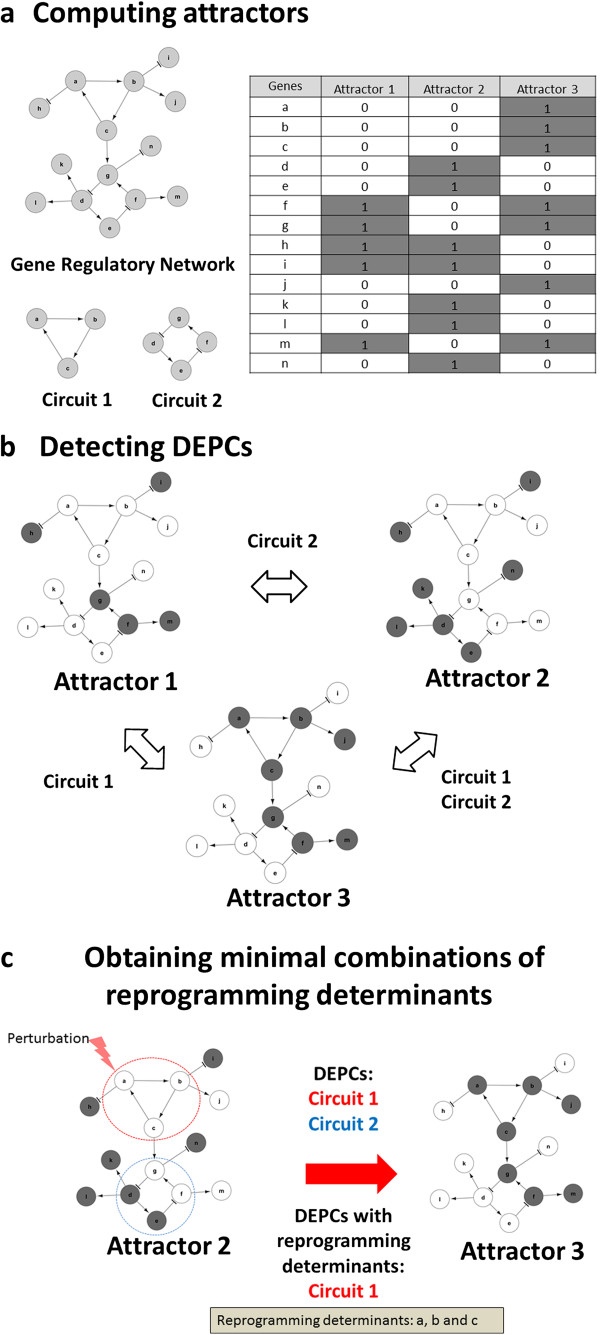Figure 3.

Differential stability analysis: recipes for cellular reprogramming in three steps. a) Computing attractors. Network stability is analyzed assuming a Boolean model and a synchronous updating scheme. Genes in “1” are active or “ON” and genes in “0” are inactive or “OFF” and are represented in grey and white respectively. b) Detecting DEPCs. A positive circuit is considered a DEPC if all of their constitutive genes change their expression values between two given attractors of the GRN. c) Obtaining minimal combinations of reprogramming determinants. Both Circuit 1 and Circuit 2 are DEPCs, but Circuit 2 is regulated by Circuit 1; any perturbation of Circuit 1 capable to move it to a different attractor is going to change the state of Circuit 2 too. Simulations showed that genes in Circuit 2 have not to be perturbed to achieve transition from Attractor 2 to Attractor 3. Therefore, minimal combinations of reprogramming determinants are any individual gene of Circuit 1, i.e., genes “a”, “b” or “c”. Regular arrows represent activation and T-arrows represent inhibitions.
